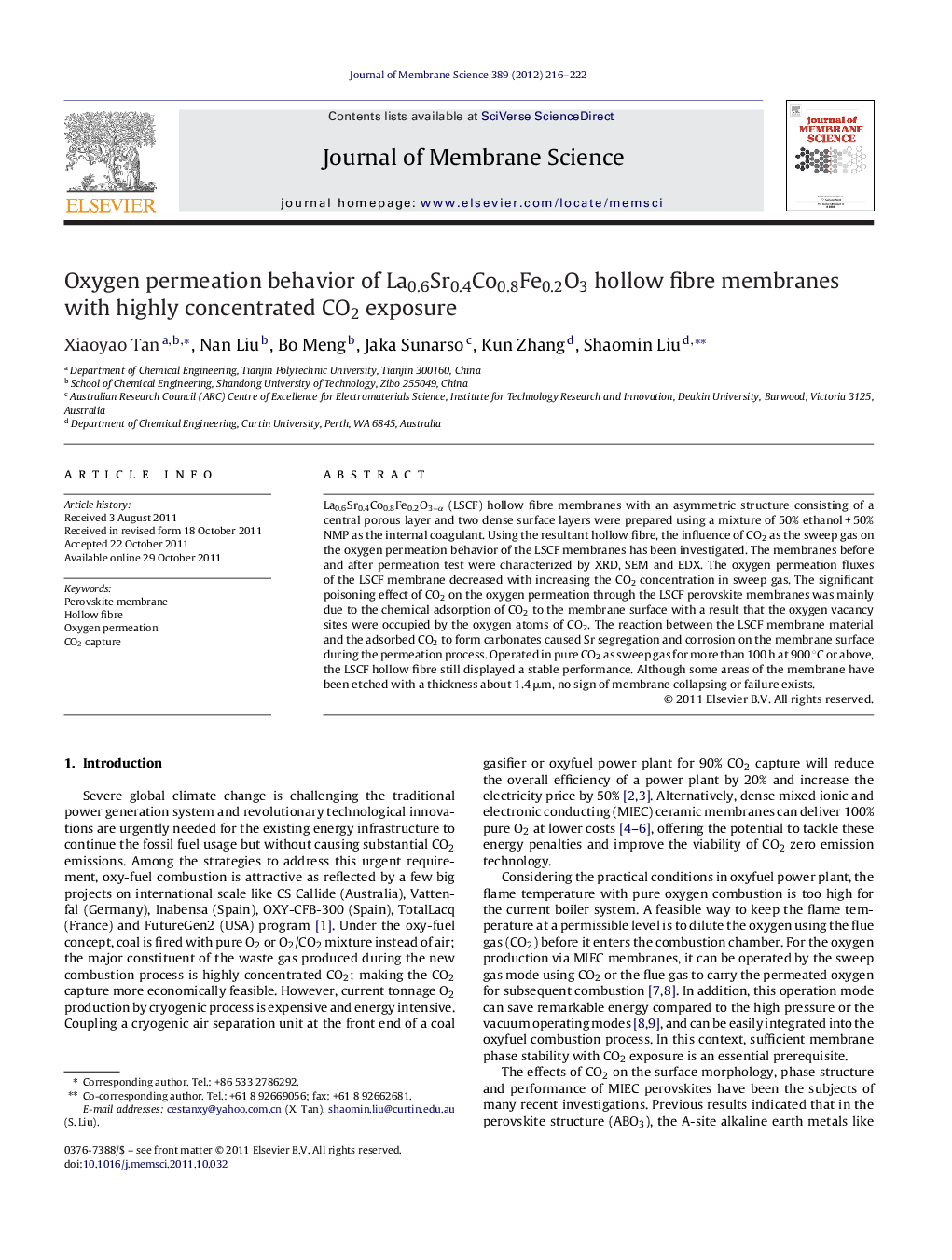| Article ID | Journal | Published Year | Pages | File Type |
|---|---|---|---|---|
| 635267 | Journal of Membrane Science | 2012 | 7 Pages |
La0.6Sr0.4Co0.8Fe0.2O3−α (LSCF) hollow fibre membranes with an asymmetric structure consisting of a central porous layer and two dense surface layers were prepared using a mixture of 50% ethanol + 50% NMP as the internal coagulant. Using the resultant hollow fibre, the influence of CO2 as the sweep gas on the oxygen permeation behavior of the LSCF membranes has been investigated. The membranes before and after permeation test were characterized by XRD, SEM and EDX. The oxygen permeation fluxes of the LSCF membrane decreased with increasing the CO2 concentration in sweep gas. The significant poisoning effect of CO2 on the oxygen permeation through the LSCF perovskite membranes was mainly due to the chemical adsorption of CO2 to the membrane surface with a result that the oxygen vacancy sites were occupied by the oxygen atoms of CO2. The reaction between the LSCF membrane material and the adsorbed CO2 to form carbonates caused Sr segregation and corrosion on the membrane surface during the permeation process. Operated in pure CO2 as sweep gas for more than 100 h at 900 °C or above, the LSCF hollow fibre still displayed a stable performance. Although some areas of the membrane have been etched with a thickness about 1.4 μm, no sign of membrane collapsing or failure exists.
► La0.6Sr0.4Co0.8Fe0.2O3−α (LSCF) hollow fibres with improved structure and high oxygen fluxes were fabricated. ► CO2 has a poisoning effect on the permeation of LSCF perovskite membranes by chemical adsorption. ► LSCF reacts with CO2 to cause the membrane surface corrosion. ► A mechanism is put forward to explain the oxygen permeation behavior with highly concentrated CO2 exposure.
